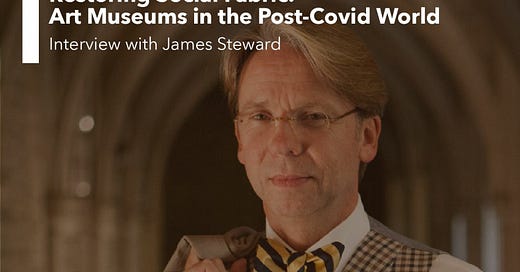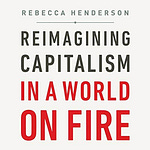Museums and galleries have been closed since March under lockdown rules, and there are growing fears among curators that many museums may never open again due to financial difficulties. James Steward is the Director of Princeton University Art Museum, where he leads a staff of 110 with an operating budget of $20 million and collections of over 110,000 works of art that span the globe and encompass 5,000 years of world history. In this interview, we discuss the role of art museums in helping make us better citizens and how the responsibilities of large art institutions may even expand in the wake of the coronavirus epidemic. An avid museum visitor himself, Tiger also asks Director Steward how the art viewing experience has changed and will continue to evolve in light of Covid-19: - Can the art viewing experience possibly be even better after we take away the shared physical space and give people a chance to reflect in a solitary fashion? - Art museums have always said to perform effects of anti-alienation and symbolize the unification of a social sphere rendered by fragmentation by class division and other societal issues. One often argues that in a place like an art museum, we may finally have a model of utopia as people come together across those obstacles and collectively share an experience. Is this something that art museums can actually achieve, especially after Covid? - Museums often contain people with the same class, race, educational level… What major takeaways could the art museum industry derive from this Covid crisis and the ongoing #BlackLivesMatter movement that might motivate it to change its course, so that museums can in fact achieve such utopian vision – helping restitch our social fabric and transcend divisions?
1×
0:00
Current time: 0:00 / Total time: -49:49
-49:49














Share this post